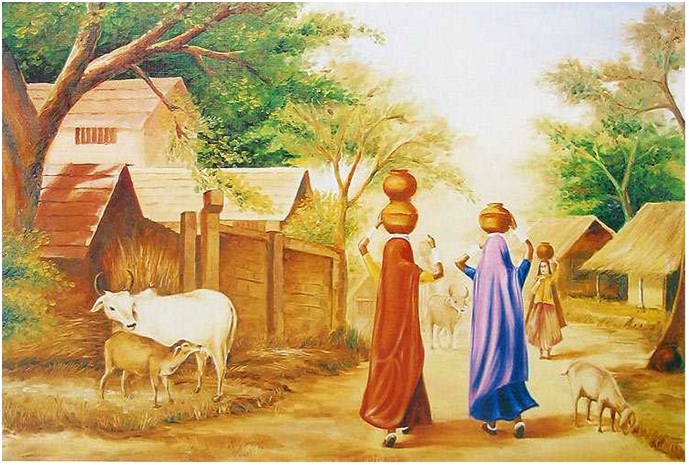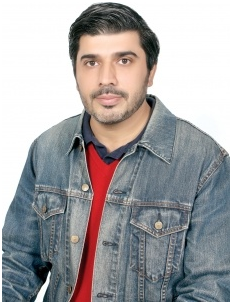

BY HASAN AFTAB SAEED

Punjabis are an ethno-linguistic group of Indo-Aryan peoples, originating from the Punjab region,
found in Pakistan and northern India. There are over 160 million Punjabis in the world (roughly
100 million and 60 million respectively in Pakistan and India). Some people are of the view that
half as many would have sufficed for the needs of the world. This is just an opinion; to date they
have never been able to back it up.
The word ‘Punjab’ is a xenonym and exonym from the Persian words panj andaab. You can easily
decipher this statement, provided you know the meaning of xenonym and exonym. Before you
embark on the fascinating task, however, let me warn you that the literal meaning has very little
relevance after the Indus Water Treaty.
In addition to Pakistan and India, a sizable number of Punjabis also resides in Canada, the UK,
and the USA. Apparently, you can easily take a Punjabi out of the Punjab; but, to date, all efforts
to take Punjab out of a Punjabi have failed spectacularly.
While for the most part the Punjabi tradition has been oral, the earliest written Punjabi works are
believed to be from the 11th century. The Punjabi civilisation easily goes back thousands of years.
Shrewd students of humanity can recognise this ancientness manifested on the faces of many
Punjabis.
Lahore is the capital of the Pakistani Punjab (it has been the traditional capital of Punjab for a
millennium now). Punjab accounts for more than half the population of Pakistan, and not
unsurprisingly, as the Punjab goes, so goes the nation. Any central government without a majority
in Punjab is, at best, a very weak government. The Indian Punjab, despite its economic and
strategic significance, is not remotely as politically dominant in India.
Punjabis are for the most part peace-loving, accepting, tolerant, flexible and adaptive. The northern
invaders never faced any resistance from Punjabis, especially from what later became the Pakistani
Punjab. They were far too pragmatic to have appetite for useless wars; they had their fields to till
and children to feed.
Punjabi is an ethno-linguistic (as opposed to a purely ethnic) group. Therefore, a description such
as a Punjabi Pathan isn’t an oxymoron. In fact, people answering to the description are not even
rare.
Punjabis have always been proud of their language, but a generation or two ago it suddenly dawned
upon the urban folk (in Pakistani Punjab) that their mother-tongue wasn’t very easy on the ears (it
didn’t sound sophisticated enough). Following this realisation, they stopped talking to their kids in
Punjabi. Simultaneously, Punjabi lost patronage among the elite in the government. Consequently,
it’s an endangered species now. On account of being less numerous and much less prolific breeders
than their Pakistani counterparts, there’s only so much that Sikhs in India and abroad can do to
arrest the decline of Punjabi.
Punjabi’s original script was Gurmukhi, although the Pakistani Panjabis use a variant of the Arabic
alphabet. Arabic is more efficient than Gurmukhi (takes less motion to achieve the same result).
This economy of movement suits the nature of Pakistani Punjabis to a T.
The British purportedly governed the parts of the empire that now constitute Pakistan on the basis
of the aphorism: ‘Rule the Punjabis, intimidate the Sindhis, buy the Pushtun, and honour the Baloch.’
I am not sure about the rest, but the part about ruling Punjabis may not have been too far off the
mark. Allama Iqbal too was of the opinion that the Punjabis were not very critical when it came to
questioning religious authority (Ho khel mureedi ka to harta hai bohat jald, etc). The Allama was
being very charitable – Punjabis are not critical in any situation. This straightforwardness, while
endearing in its own charming way, has ended up damaging themselves (sometimes) or some
other ethnic group (usually).
Most Punjabis are open-minded, liberal, and progressive. There’s malicious propaganda about their
being despotic husbands, who are overly stern with their wives. The reality couldn’t be more
different. Punjabi husbands, especially those that have had any sort of education, happen to be the
most uxorious on the face of the planet. A mere glance from the Mrs is enough to make the chilliest
of shivers run up the spine of an otherwise ruthless Punjabi leader of men. When a Punjabi talks of
women rights he definitely has his money where his mouth is.
Doubts about the raison d’etre of Punjab are occasionally raised (sometimes lyrically, eg, ‘Ik sooba
hai Punjab, ye maaloom naheen kioon‘). A mention of Bulleh Shah, Iqbal, Faiz, Manto, Khurshid
Anwar and Munir Niazi ought to suffice by way of an answer to such doubts.
Every language has its strengths. English has the unmatchable facility of absorbing words from
other languages; Persian and Urdu are extremely well suited to verse; French is the language of
love (this, on the authority of people who are usually in the know of such things; the author’s own
experiences of love and French, sadly, being rather limited). Punjabi is famous for its almost infinite
capacity to express unpleasant and complicated ideas in a pithy, concise manner. (The more
perceptive of my readers will doubtless realise that I am referring to expletives.) There are rumors
about Punjabi parents whispering choice swear-words into the ears of their newly born, so that he
grows up to pronounce them properly. Being a born and bred Punjabi myself, I can categorically
repudiate the veracity of such claims.
Another standout feature of the Punjabi language – not entirely unconnected with the first – is that
it is uniquely suited to expressing humor. Many a Punjabi joke has been spoilt when it was
translated to another language. This may be true of other languages too, but the Punjabi joke
punchline is well-nigh untranslatable. Out of the many different forms of comedy – satire, black
comedy, deadpan comedy, surreal comedy, word-play, etc – the Punjabis have made the art of
jugat (the closest translation would be insult comedy) their own. Comics from Faisalabad,
Gujranwala, Sialkot, and – by virtue of migration – Lahore, are world’s leading exponents of this art.
Punjabis may not be the best-looking of all the ethno-linguistic groups of the Indian subcontinent,
but they are very good-looking nevertheless. They may not be the smartest, but they are very
resourceful. They may not be the most enterprising, but they sure know how to make money.
There’s consensus on one thing though: They are the loudest of them all. A Punjabi postman
definitely doesn’t need to knock twice.
It is said that prosperity, when it becomes widespread in a nation, is followed – in about twenty
years’ time – by appreciation and cultivation, on the part of a not inconsiderable percentage of
the population, of pursuits that stimulate the higher human faculties. Apparently this does not
apply to the Punjabis. Reasons for this are not yet known at all. It can serve as a promising PhD
topic for any budding researcher who aspires to a career as a taxi-driver.
Punjabis don’t differentiate between the two kaafs of Urdu. What’s more, most are not even aware
of this rather grave shortcoming on their part.

Hasan Aftab Saeed
The author is a connoisseur of music, literature, and food (but not drinks). He can be reached at www.facebook.com/hasanaftabsaeed
Source:Pakistan Today, FEBRUARY 18, 2016
Send email to nazeerkahut@punjabics.com with questions, comment or suggestions
Punjabics is a literary, non-profit and non-Political, non-affiliated organization
Punjabics.com @ Copyright 2008 - 2018 Punjabics.Com All Rights Reserved
Website Design & SEO by Webpagetime.com